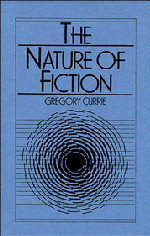Chapter 5 - EMOTION AND THE RESPONSE TO FICTION
Published online by Cambridge University Press: 05 November 2011
Summary
We read novels not merely to find out what is true in them, or to decide whether the author has done a decent job of plot construction, or to study the characteristics of a certain genre. We read them because we hope they will engage us, that we will be caught up in their plots, that we will be concerned – perhaps intensely concerned – for their characters, what they do and what is done to them. Like others who read The Turn of the Screw as a ghost story, I loathe Quint and pity Miss Jessel. And the children, at first delightful, quickly assume the aspect of a disturbing maturity. Followers of Edmund Wilson will take a different view of the story, but it will hardly be a less emotionally engaged one as they see the innocent children drawn tragically into the governess's world of delusive madness. And whether the governess opposes a real threat from the supernatural or the products of her own imagination, her courage and determination are surely admirable.
FINDING THE PROBLEM
Although we may disagree about the impact of any particular work, there is little doubt that we all, on occasion, report similar responses to fiction. But as other writers have made clear, there is something very puzzling about this. The problem is not that fiction is too trivial or irrelevant to our real concerns to be worth becoming emotional about.
- Type
- Chapter
- Information
- The Nature of Fiction , pp. 182 - 216Publisher: Cambridge University PressPrint publication year: 1990



